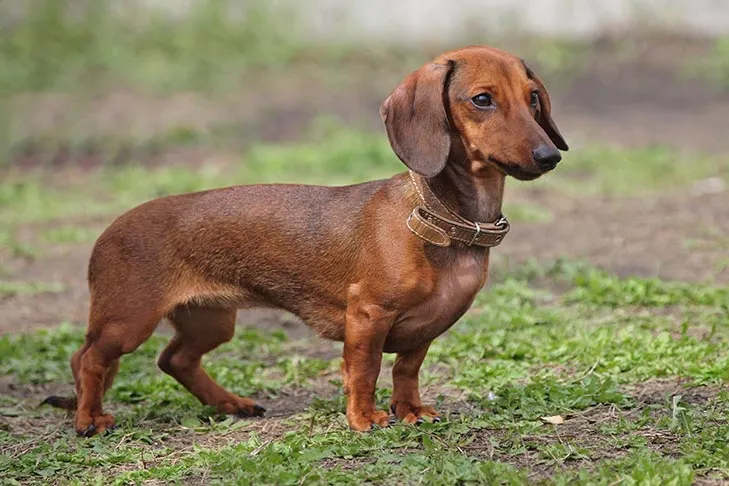Dogs With Dwarfism Syndrome present with distinctive physical characteristics, including disproportionately short limbs and a larger-than-average head. This complex medical condition, which affects size, overall health, and development, is hereditary, meaning it can be passed down through genes from parent to offspring. While some breeds, like Dachshunds and Pembroke Welsh Corgis, are intentionally bred for their unique proportions, in other cases, dwarfism arises from spontaneous genetic mutations that impact bone and cartilage development. As an expert in canine health and a dedicated editor for “Dog Care Story,” this article aims to provide a comprehensive guide for English-speaking dog owners, shedding light on the various forms of dwarfism, how it’s diagnosed, and how to manage the health and well-being of affected dogs.
What is Dwarfism in Dogs?
Dwarfism is a medical condition observed in both humans and dogs, characterized by an “abnormally short stature and disproportionate body proportions,” as defined by Dr. Amy Attas, VMD, of City Pets in New York. In canines, dwarfism is triggered by genetic mutations that interfere with the development of the skeletal system. This system, responsible for the body’s structure and organ protection, is critically affected. The two most prevalent forms of canine dwarfism are achondroplasia and pituitary dwarfism.
Achondroplasia: The Common Form
“The most common form of dwarfism in dogs is called achondroplasia,” states Dr. Attas. This condition stems from a genetic mutation impacting fibroblast growth factor receptors, which play a crucial role in regulating bone growth. This mutation disrupts the normal process of cartilage hardening into bone during fetal development. Consequently, puppies are born with limbs that are either shortened or bowed, and often possess an unusually large head. These distinct features are recognized as standard in specific breeds due to selective breeding practices that have favored this genetic mutation. Breeds commonly exhibiting achondroplasia include the Dachshund, Basset Hound, Pembroke Welsh Corgi, Bulldog, French Bulldog, and Petit Basset Griffon Vendéen.

Pituitary Dwarfism: A Different Etiology
Unlike achondroplasia, pituitary dwarfism in dogs is not a result of intentional breeding and dogs with this condition should not be bred. Also known as hypopituitarism, this form of dwarfism occurs when the pituitary gland fails to produce or secrete adequate amounts of growth hormone. The pituitary gland is vital for regulating metabolism, growth, and reproduction. While genetic mutations can cause pituitary dwarfism in an individual dog, it’s not typically a breed-wide characteristic. Other less common causes include damage to the pituitary gland during birth (due to oxygen deprivation), tumors, inflammatory conditions, or early-life traumatic brain injuries.
Pituitary dwarfism is most frequently observed in German Shepherd Dogs, where affected individuals resemble miniature versions of the breed, often retaining their characteristic large ears but with a small body and patchy coat. This genetic mutation has also been reported in Tibetan Terriers and breeds less common in the U.S., such as the White Swiss Shepherd Dog and Lapponian Herder.
Symptoms of Dwarfism in Dogs
Dogs diagnosed with pituitary dwarfism can be significantly smaller than their littermates. Due to the hormonal deficiency, they often experience a range of health issues, including:
- Delayed eruption of adult teeth and abnormal bite alignment, leading to dental problems.
- Thin, fragile coats with hair that breaks easily, and potential alopecia (hair loss) in patches.
- Skin issues and a heightened susceptibility to infections.
- Reduced muscle mass.
- Increased risk of orthopedic conditions like hip dysplasia and luxating patella.
- Eye problems, such as cataracts and retinal degeneration.

These dogs are also frequently infertile, which Dr. Attas notes is beneficial as it prevents them from passing on the condition. It is crucial for potential owners of breeds commonly affected by dwarfism, like German Shepherds, to inquire about any history of the condition within the lineage.
Diagnosing Dwarfism in Dogs
When a puppy is notably smaller than their littermates, veterinary diagnostics can confirm the presence of pituitary dwarfism. Radiographs (X-rays) can reveal decreased ossification, meaning the hardening of cartilage into bone, which is expected in affected dogs. Blood tests are also instrumental in identifying genetic mutations and measuring hormone levels. Dogs with pituitary dwarfism will exhibit lower growth hormone levels compared to their healthy counterparts. While growth hormone supplementation can be considered, commercially available human growth hormone is ineffective for dogs due to antibody development. Pig growth hormone, however, is available and has shown positive results in dogs.
Veterinarians will also assess creatinine levels, which are often elevated in dogs with pituitary dwarfism, indicating kidney function. Comparing a puppy’s results with those of their littermates is particularly helpful. Additionally, hypothyroidism, a condition where the thyroid gland fails to produce sufficient hormones, can be present and is managed with thyroid hormone replacement therapy.
Managing Symptoms of Dwarfism in Dogs
For dogs with achondroplasia, even though their physical traits are selected for, they are predisposed to medical issues, particularly involving the back, discs, and spinal cord. Their long, low body structure places significant pressure on their spine.

As pituitary dwarfism is congenital, corrective surgery or physical rehabilitation cannot cure the condition. Affected dogs will not achieve normal size. Once diagnosed, management strategies include administering porcine growth hormone and treating any concurrent thyroid deficiency.
Weight management is critical, as overweight dogs are more prone to painful disc problems. If a disc compresses the spinal cord, emergency surgery may be required to prevent loss of mobility. Maintaining a healthy weight through appropriate diet and exercise is paramount for all dogs, especially those with dwarfism.
Since pituitary dwarfism is a genetic mutation, it cannot be “fixed.” For breeders, genetic health testing is vital to identify affected dogs and prevent them from being bred, thus avoiding the perpetuation of the mutation. Veterinarians may also recommend spaying or neutering affected dogs as a precautionary measure.
